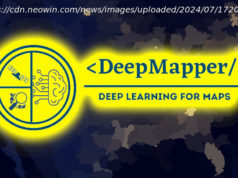This article explores the thinking process behind the design of the new Milvus database cluster architecture.
Join the DZone community and get the full member experience. When the idea of the Milvus vector database first came to our minds, we wanted to build a data infrastructure that could help people accelerate AI adoptions in their organizations. We have set two crucial objectives for the Milvus project to fulfill this mission. AI/ML is an emerging area where new technologies keep coming out. Most developers are not entirely familiar with the fast-growing technologies and tools of AI. Developers have already consumed most of their energies finding, training, and tuning the models. It’s hard for them to spend additional efforts handling the large amounts of embedding vectors generated by the models. Not to mention the manipulation of a large volume of data is always a very challenging task. Thus, we give « ease of use » a very high priority since it could significantly reduce the development cost. One of the primary hurdles of AI in production is to justify the return of investment. We would have more opportunities to put our AI applications into production with lower running costs, and it would be conducive to lifting the margin of potential benefits. We made a start towards these goals in Milvus 1.0. But it’s far from enough, especially in scalability and availability. Then we started the development of Milvus 2.0 to improve these points. The principles we have laid down for this new version include: In other words, we want to make the Milvus database cluster cloud-native. The vector database is a new species of database, as it handles new types of data (vectors). However, it still shares the same challenges as other databases, with some of its own requirements. In the rest of this article, I will focus on what we have learned from the existing database cluster implementations and the thinking process of how we designed the new Milvus group architecture. If you are interested in the implementation details of Milvus group components, please stay on top of the Milvus documentation. We will continuously publish technical articles in the Milvus GitHub repo, Milvus website, and Milvus Blog. « Aim small, miss small. » Let’s first list the critical capabilities an ideal database cluster should have. Honestly, all of these capabilities are hard to acquire together. In the modern implementations of database clusters, people have to compromise some of these capabilities. People don’t expect a perfect database cluster as long as it can fit into the user scenarios. However, the shared-everything cluster was once very close to an ideal database cluster. If we want to learn something, we should start from here. The shared-everything cluster has a more extended history compared to other modern implementations. Db2 data sharing group and Oracle RAC are typical of shared-everything clusters. Many people think shared-everything means sharing disks. It’s far more than that. A shared-everything cluster only has one kind of database member in the group. Users could connect to any one of these symmetric members to access any data. What is « everything » that needs to be shared for making this work? First, the group event sequence is crucial to resolve the potential conflicts caused by the concurrent access from different groups members. We usually use the database log record sequence number to represent the event sequence. At the same time, the log record sequence number is generally generated from the timestamp. Thus, the requirement of group event sequence is equal to the need for a global timer. If we could have an atomic clock for the group, that would be fabulous. Yet Milvus is an open-source software project, which means we should rely on commonly available resources. To date, an atomic clock is still a premium option for large companies. We have implemented the time synchronization component in Milvus 2.0 database cluster. You can find the link in the appendix. The database has a locking mechanism to resolve concurrent access conflicts, whether optimistic or pessimistic locks. Similarly, we need global locking to resolve simultaneous access conflicts across different group members. Global locking means different group members have to talk with each other to negotiate the lock requests. Several vital factors would impact the efficiency of this global lock negotiation process: The typical group size is no more than 100. For example, Db2 DSG is 32; Oracle RAC is 100. Those group members will be placed in one server room connected with optical fiber to minimize transfer latency. That’s why it is sometimes called a centralized cluster. Due to the group size limitation, people will choose high-end servers (mainframes or minicomputers, which have much more capacity in CPU, memory, I/O channels, etc.) to consist of the shared-everything clusters. This hardware presumption has dramatically changed in the modern cloud environment. Nowadays, cloud data centers comprise high-dense server rooms full of (thousands of) commodity X86 servers with TCP/IP connections. If we rely on these X86 servers to build the database cluster, the group size should increase to hundreds of (even thousands of) machines. And in some business scenarios, we will want these hundreds of X86 machines to spread in different regions. Thus implementing global locking might not be worth it anymore, as the global locking performance will not be good enough. In Milvus 2.0, we are not going to implement the global locking facility. On the one hand, there is no update for vector data. (People should rather delete-then-insert instead of update.) So we don’t need to worry about the multi-writer conflicts on the same piece of data in the Milvus group with sharding arrangement. Meantime, we could use MVCC (multi-version concurrency control, a lock-avoidance concurrency control method) to resolve the reader-writer conflicts. On the other hand, vector data processing consumes a much higher memory footprint than structured data processing. People are looking for much higher scalability in vector databases. We can briefly divide a database engine into two parts: the storage engine and the computing engine. The storage engine is responsible for two critical tasks: In the database cluster scenario, what if member A has updated the data cached in member B? How could member B know its in-memory data is expired? The classic shared-everything cluster has a buffer cross invalidation mechanism to resolve this issue.






